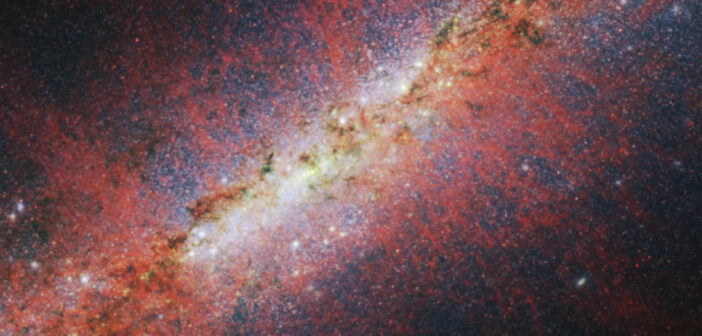Starburst galaxies are prolific star factories, churning out tens to hundreds of stars each year. By contrast, the Milky Way crafts just a handful of stars annually. Recently, a team led by Alberto Bolatto (University of Maryland) turned JWST toward the cigar-shaped galaxy Messier 82, which is a starburst galaxy 12 million light-years away. Messier 82’s star formation rate has cooled from an impressive peak of 160 solar masses of stars per year 8–15 million years ago to 12 solar masses per year today. The team sought to study the powerful winds that whisk away star-forming gas from the galaxy’s center. In the image above, which shows the central few thousand light-years of the galaxy, red represents 3.3-micron (1 micron = 10-6 meter) emission that largely comes from polycyclic aromatic hydrocarbons: sooty molecules that contain multiple rings of carbon atoms bonded together. (Green and blue represent 2.5-micron and 1.6-micron emission, respectively; the compact green areas are mostly supernova remnants.) These new observations show in great detail the narrow, intertwined filaments and bubbles highlighted by the 3.3-micron emission. The filaments may have formed when dense, dusty clumps of gas were shredded by the outflowing galactic wind. To dive into the science behind this image, be sure to check out the full research article linked below.
Citation
“JWST Observations of Starbursts: Polycyclic Aromatic Hydrocarbon Emission at the Base of the M82 Galactic Wind,” Alberto D. Bolatto et al 2024 ApJ 967 63. doi:10.3847/1538-4357/ad33c8
